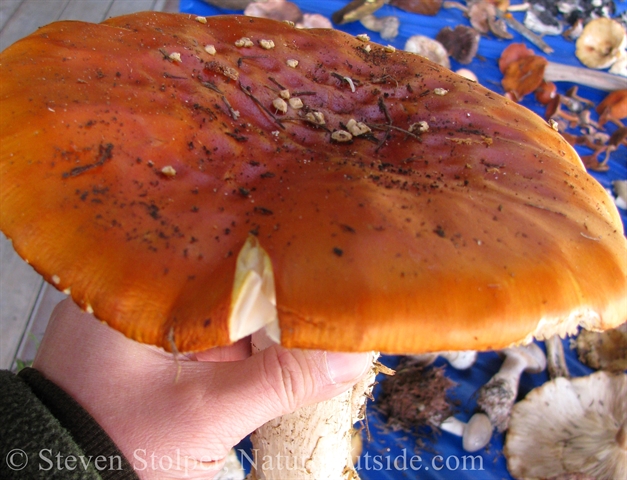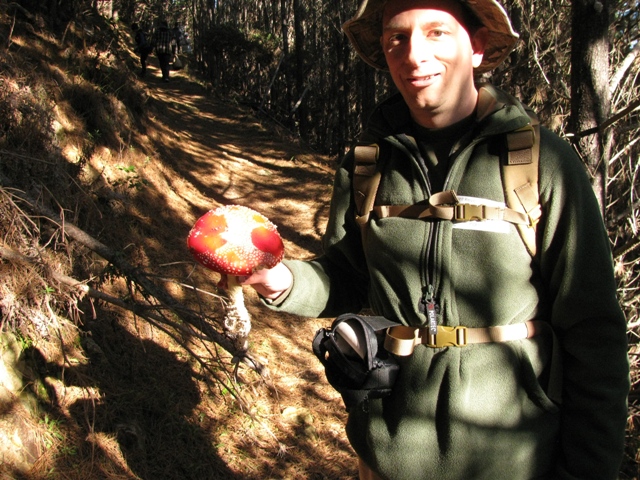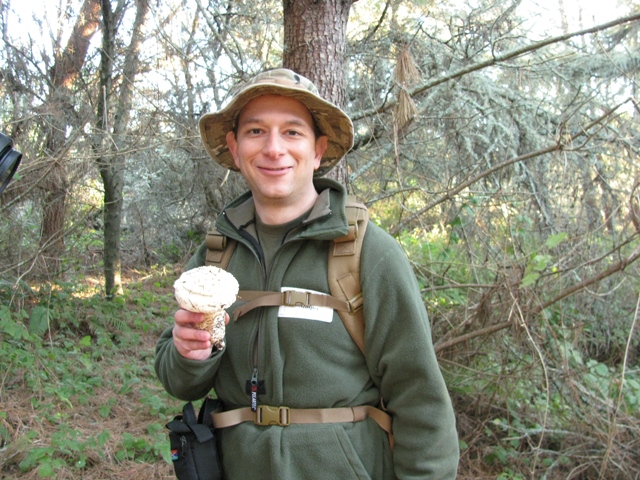
When I want to learn a skill, I find knowledgeable people and try to learn from them. I spent last weekend with a group of mycophages (people who eat fungi). My interest was more scientific than culinary. But I learned a tremendous amount about fungus identification and the art of finding them. There were several lectures and hikes to different microclimates. Here are some pictures from the outing.
- This class does not meet very often. So the total amount of fungi gathered over a year is proportionally small.
- A mushroom is a fruiting body. Picking a mushroom is analogous to picking an apple or a pear. It does not kill the organism (mycete) that produces the fruit.
- We foraged in an area where it is legal to pick mushrooms.
- I do not plan to comment on edibility or correct handling. Please use due care.
I found an Amanita Muscaria. This beautiful mushroom contains the toxin ibotenic acid.

I found a large Amanita Magniverrucata. It is hard to see but it has massive “warts” on the cap.

Over the course of a three hour walk, the class assembled a tremendous number of species. The variety of forms of fungi are amazing. Their cell composition and chemistry is so different from what I am used to hearing about with plants and animals that it is like studying some alien form of life.


Another student found an Amanita Muscaria that put mine to shame.

I took the class because I have seen way too many Ray Mears videos where he makes yummy noises while eating mushrooms.



Notice the “false gills” on this one. The instructors taught that false gills are folds in the flesh of the mushroom having a “thickness” dimension. Where real gills are paper-like.

Notice the characteristic annulus on this Amanita magniverrucata. It is the remains of the partial veil that covers the gills before the spore producing tissue matures. It also has the characteristic bulge at the bottom of the stipe (volva) that is created as the mushroom pushes through the universal veil as it starts to grow. Seeing this combination of features immediately puts me on RED ALERT.

The eyes can be deceived. Our senses and instincts are not well adapted to determining which mushrooms are edible and which are not. One of the mushrooms below is edible. The other is a toxic look-alike to a popular edible.


In addition, our digestive system is not geared for fungi. Almost all edible mushrooms should be cooked, unless specifically called-out as edible raw. Without cooking, our systems cannot extract any nutrirtion. This is because the cell walls of fungi are made of mycochitin, not cellulose. Without cooking to break down the cell walls, we might as well eat rocks. You know those pretty button mushrooms found on many restaurant salads…
Anyway, I had a terrific time surrounded by enthusiastic mushroom hunters. I was certainly inspired to learn more about these amazing organisms whose chemistry seems so weirdly different from our own.
Other Wild Edibles on NatureOutside
How to Make Acorns into Food (Part 1)
Bushcraft Dessert – Make a Lavender Dip for Strawberries
For fun facts and useful tips, join the free Bushcraft Newsletter.



Leave a Comment